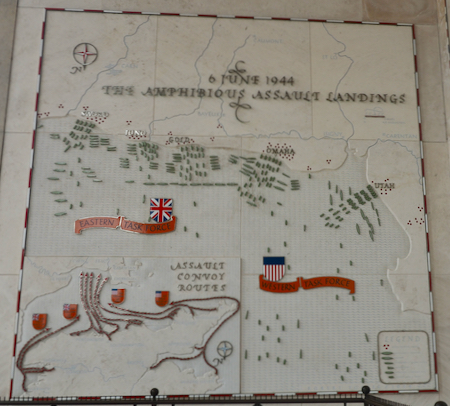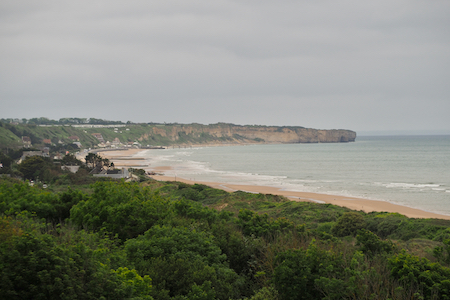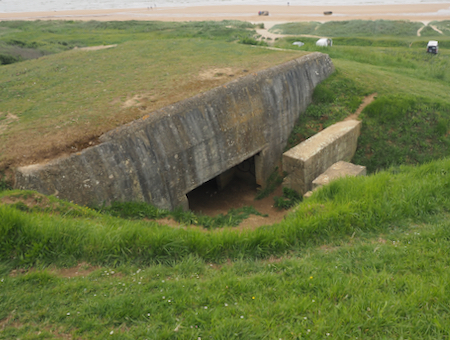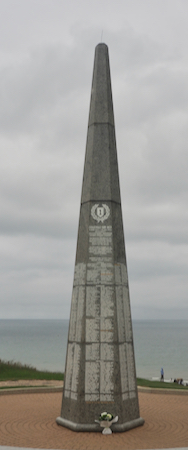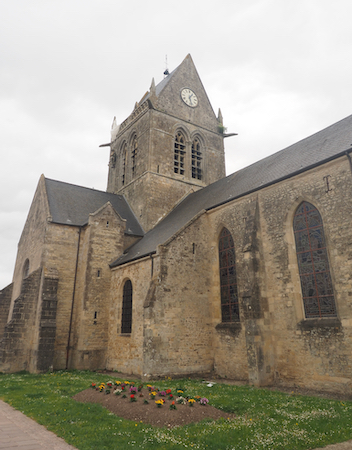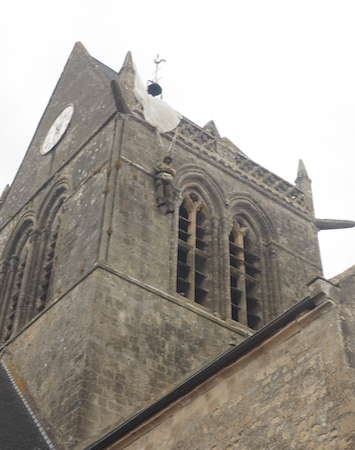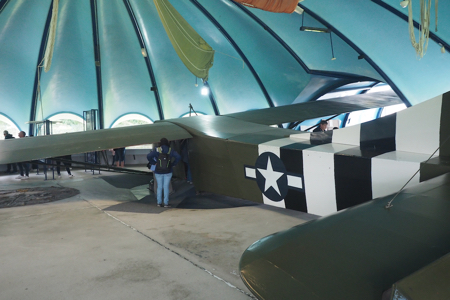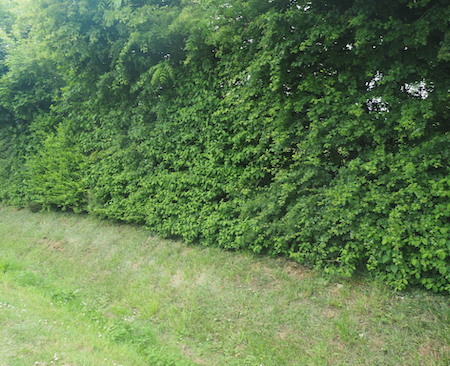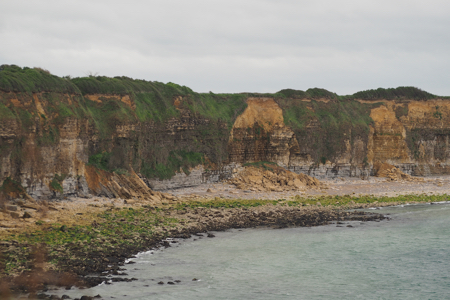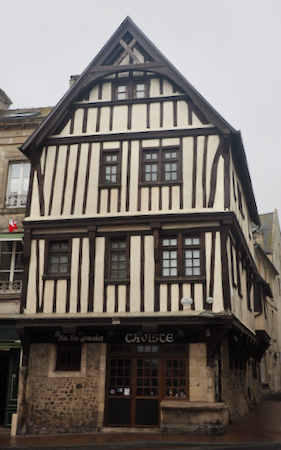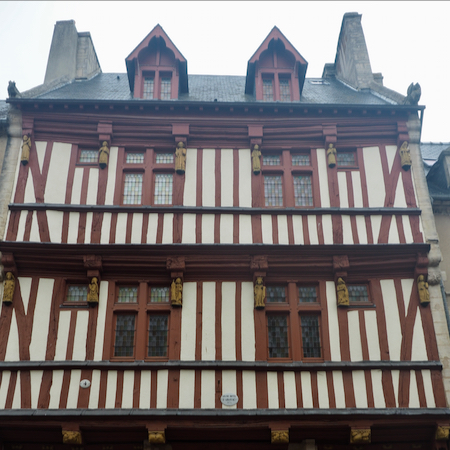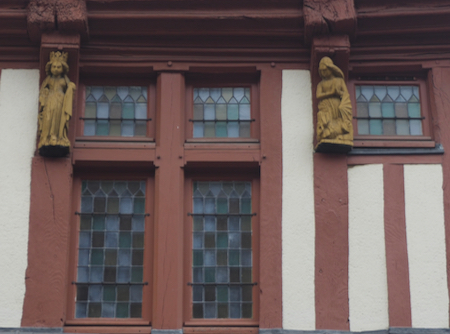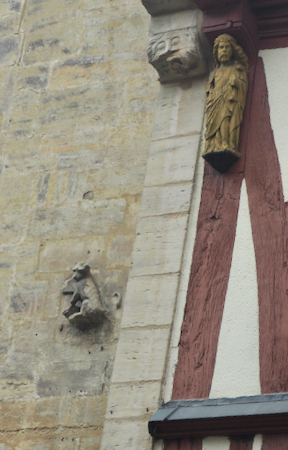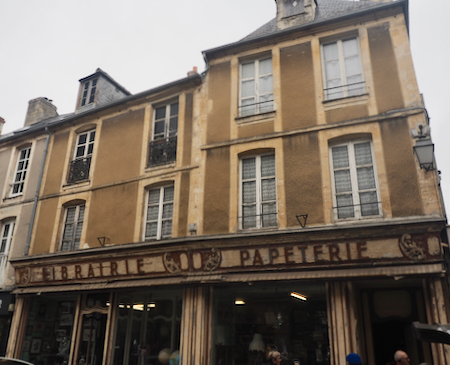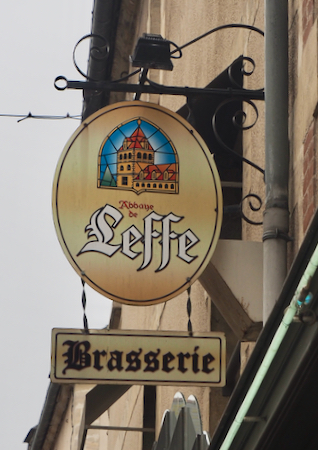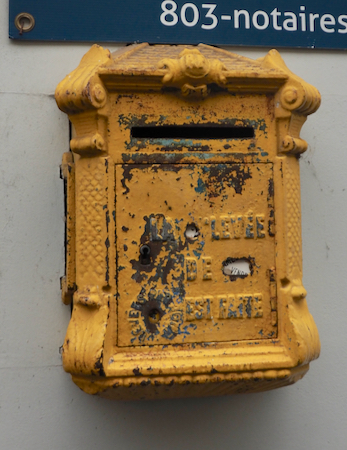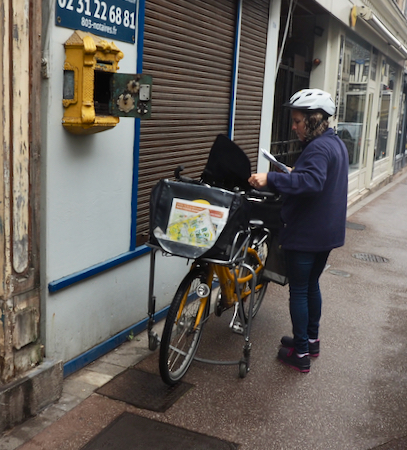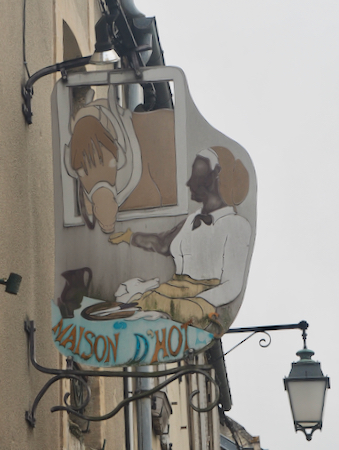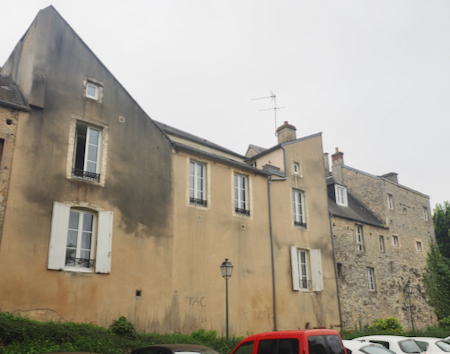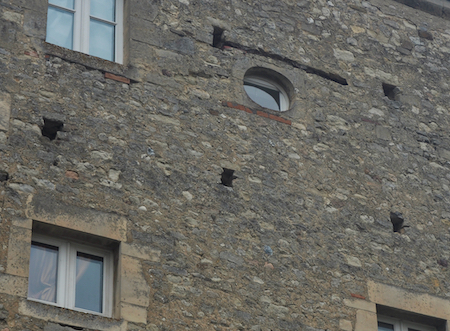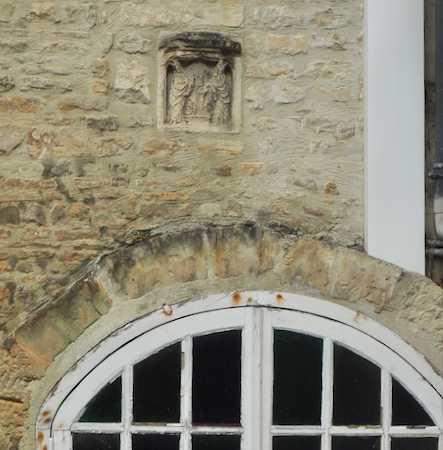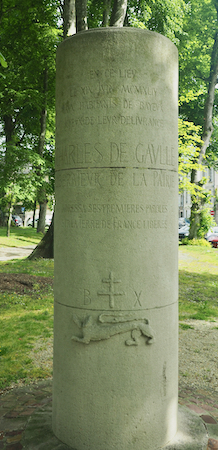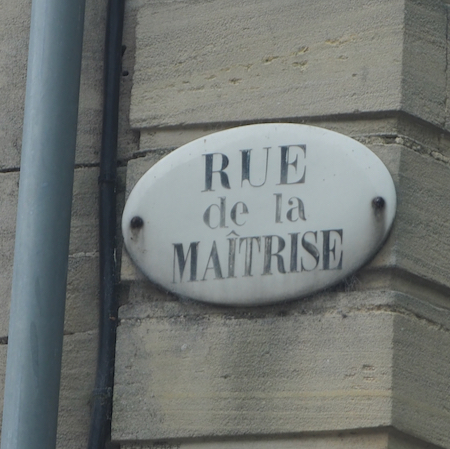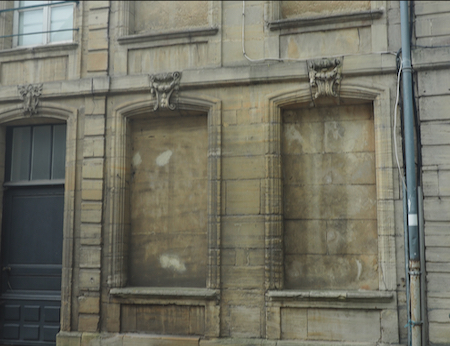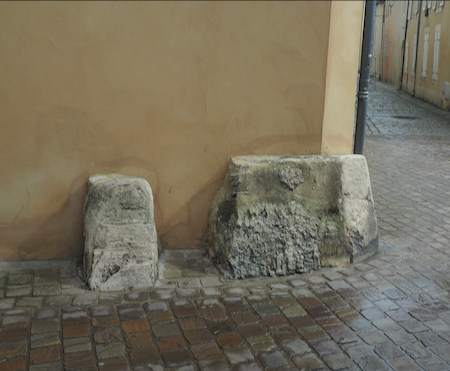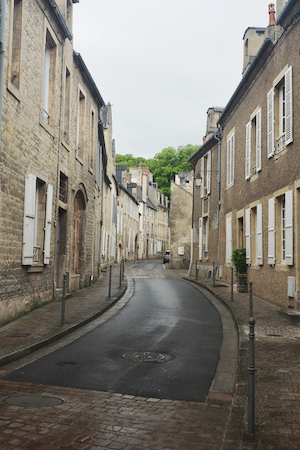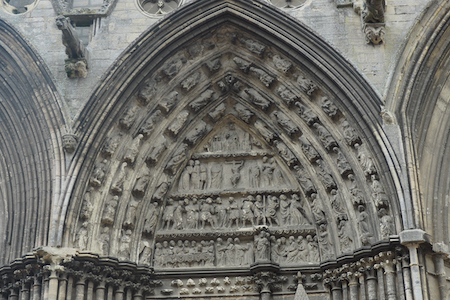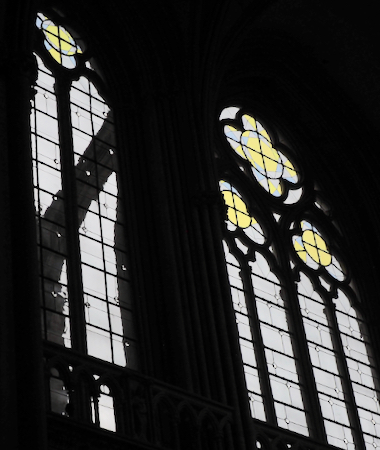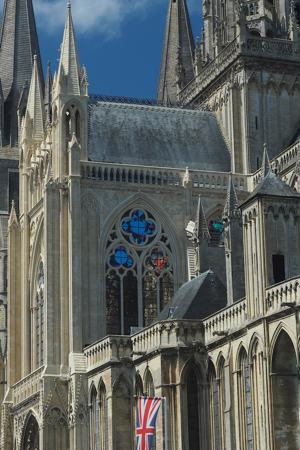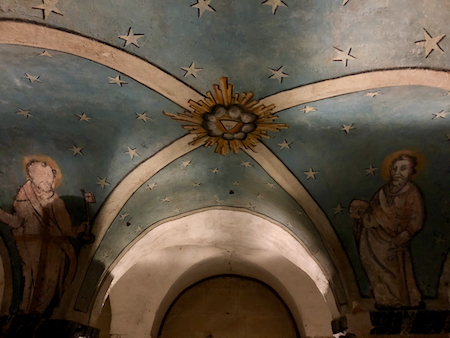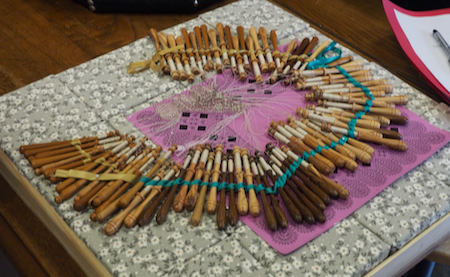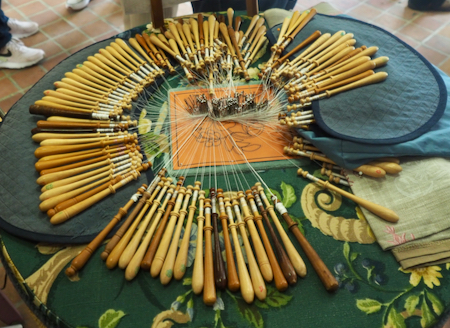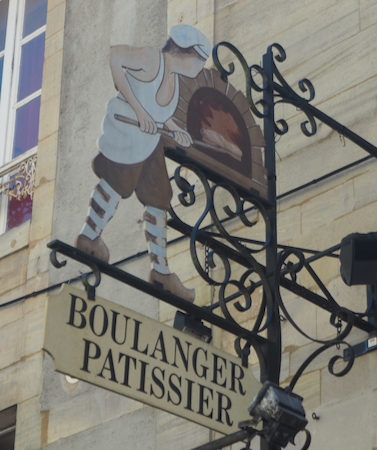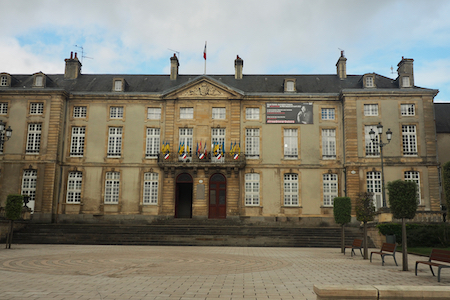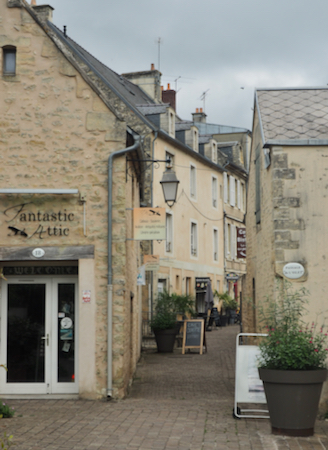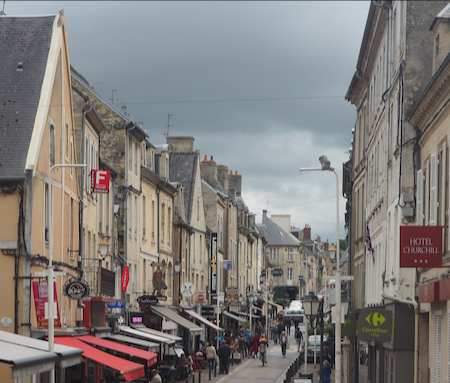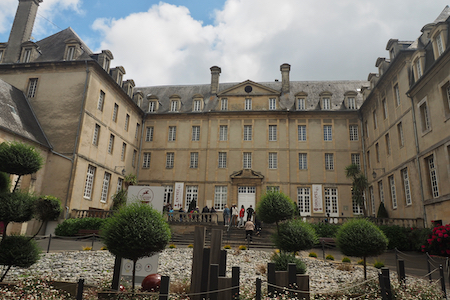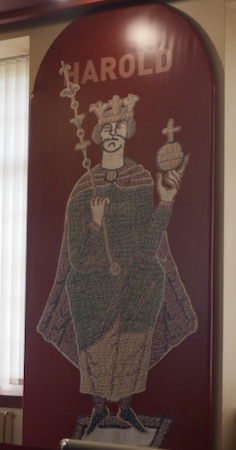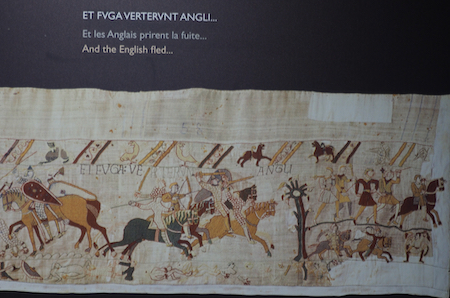Thurs., 5/26/22 - Bayeux and Normandy Beaches
Today was all about WWII and the D-Day landings at Normandy. The tour started at the Normandy American Cemetery and Memorial. Next we walked to and along Omaha Beach before returning to the bus and moving on to Sainte Mere Eglise. It really is a stunning place in many ways.
Normandy American Cemetery and Memorial
One of several excellent maps of the D-Day landings and further campaigns to liberate France
Omaha Beach
German bunker
1st Infantry monument
At Sainte Mere Eglise we heard the story of the paratrooper who caught his chute on the church spire and hung there to be shot by a German soldier - a fabrication for the movie “The Longest Day.” The paratrooper in question actually landed beyond the church - but that doesn't make a very good story for a movie.
The 101st Airborne Museum is at Sainte Mere Eglise. The 101st was one of the two U.S. airborne units who parachuted inland from the beaches in the pre-dawn hours before the D-Day landings. The other was the 82nd Airborne. The museum had a British glider with a female manikin as a pilot and one of the troopers was also a female, so what in the rest of the museum is anyone to believe? The highlight of the visit was the talk and interaction with a Mr. Renault who was 10 years old and living in St. Mere Eglise on D-Day. He saw paratroopers hung up in trees, he saw dead soldiers, he and his 12-year old brother went around collecting things from the fallen, and they were welcomed by the U.S. soldiers in their camp and were given chocolate and Cokes.
Notre-Dame-de-l'Assumption church in Sainte Mere Eglise
Memorial to the paratroopers hanging from the church steeple
British glider
The day's last stop was at Pointe Du Hoc where several bunkers containing large caliber German guns were located. It is here that the U.S. Rangers landed and scaled the cliffs to attack and destroy the guns which were able to shoot at ships 12 miles out to sea. The land has been left as it was after being bombed on D-Day.
Hedge row similar to the ones that made progress after the landings so difficult. The density of the foliage and, especially, the raised land proved a formidable obstacle.
Bombing craters
U. S. Ranger Monument on the cliffs
Cliffs scaled by the Rangers on D-Day
Fri., 5/27/22 - Bayeux and the Tapestry
Today was spent enjoying the town of Bayeux. It is a very old village, dating back to the first century BCE. Stephanie took us on an architectural tour of Bayeux. We looked at different ages of windows and shutters; holes in outer walls that once supported wooden ramparts for defense; toilet drops at corners of houses; cobblestones to make cleaning wastes from the streets easier; low doors for work carts and higher ones for people carriages; blocks to keep carriage wheels from nicking the corner of a building or gate; buttresses and flying buttresses; etc.
Half-timbered buildings
Half-timbered buildings
A Grotesque or Chimera (fantastic or mythical figures used for decorative purposes) carved into a wall
Paper shop (once)
New favorite Belgian beer
Post box (a little the worse for wear)
Post-lady
In a shop
Nice sign
Different windows and shutters denote the period of construction
Holes in outer walls once supported wooden ramparts for defense
Half-timbered room on the corner was the toilet drop
Monument at the site of a Charles de Gaulle speech
The marker is considered Ground Zero to the French Liberation - from Bayeux to Paris.
Street sign
If you bricked up the windows, it reduced your taxes!
In the 1700s the king was in need of money so he set up taxes on three things - salt, flour, and window panes. Only the rich had lots of windows and some blocked them up to avoid the tax - and they are still blocked in today.
Originally to protect the corners from horse carriages - probably still useful
Street scene
Cathedral of Our Lady of Bayeux
Carved entry
Fairly plain nave
The organ
Stained glass window from the inside looking out
Same window from the outside looking in
In the crypt
Ceiling in the crypt
Lace making pattern at the Lace Conservancy where women still tat and teach others the skill.
Making lace
Lace making pattern
Another nice sign
City Hall
Labyrinth in front of the City Hall
Canal
Street scene
Street scene
Water wheel along the canal
The highlight of the day was the visit to see the Bayeux Tapestry. It is an embroidery on linen that is about 70 meters long and tells the story of the events leading up to the Norman Conquest of England by the Duke of Normandy. It culminates in the 1066 Battle of Hastings.
We had audio devices to listen to the story as we walked along the ”tapestry.” It was so interesting we went back and walked through a second time. Afterwards, we went upstairs to take pictures of a copy of the tapestry and to watch a movie (in English) about it.
Museum sign
Museum housing the Bayeux Tapestry
King Harold
Photo of the tapestry
Photo of the tapestry


